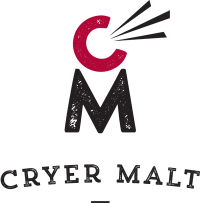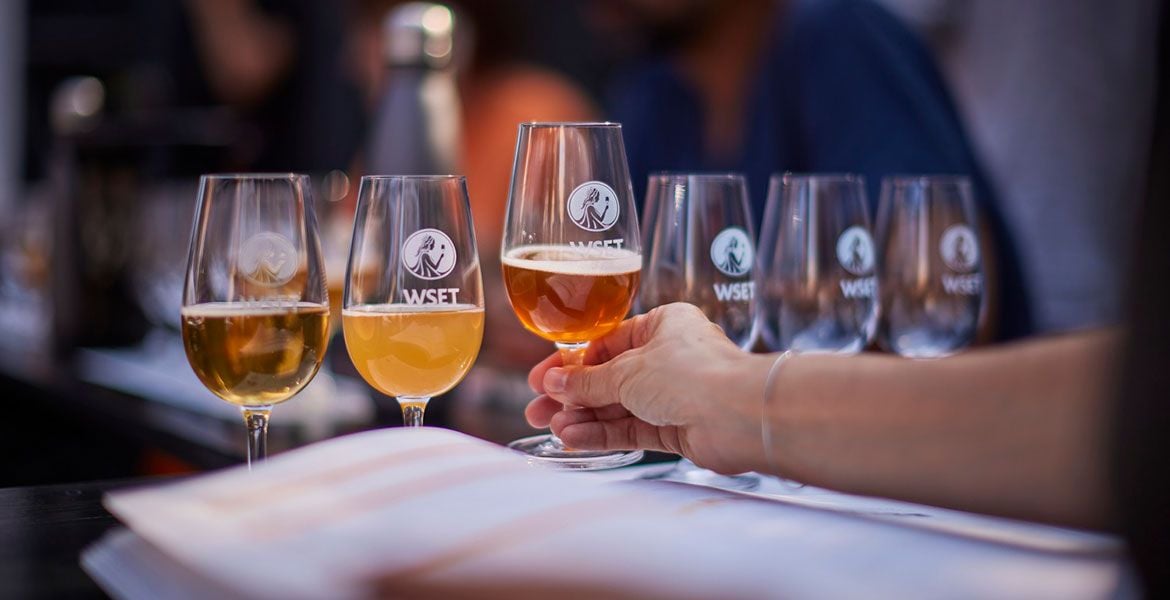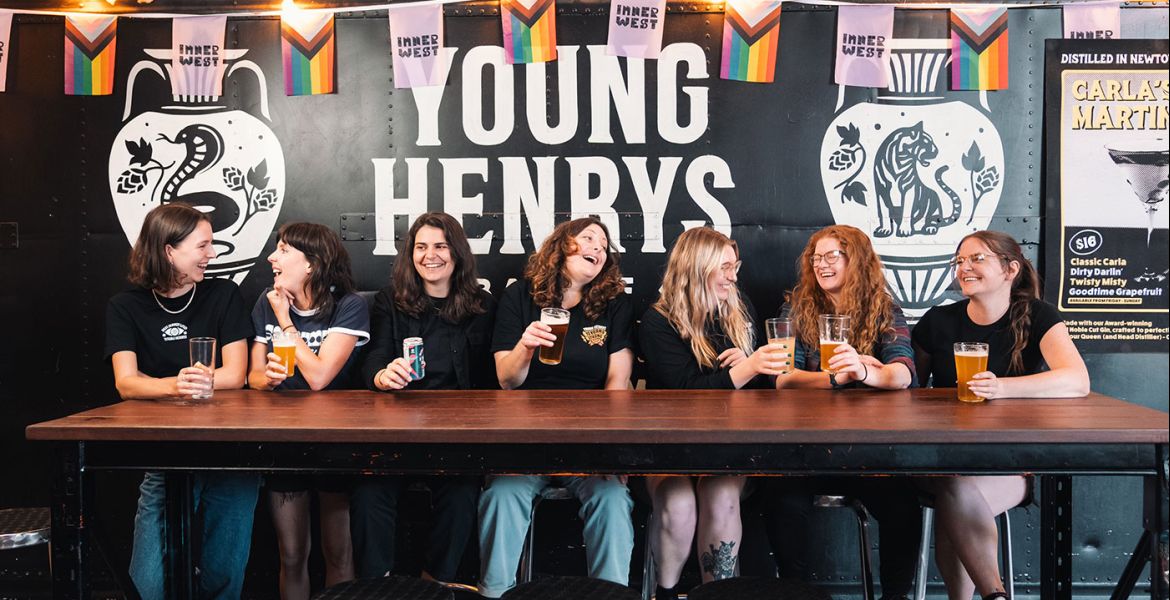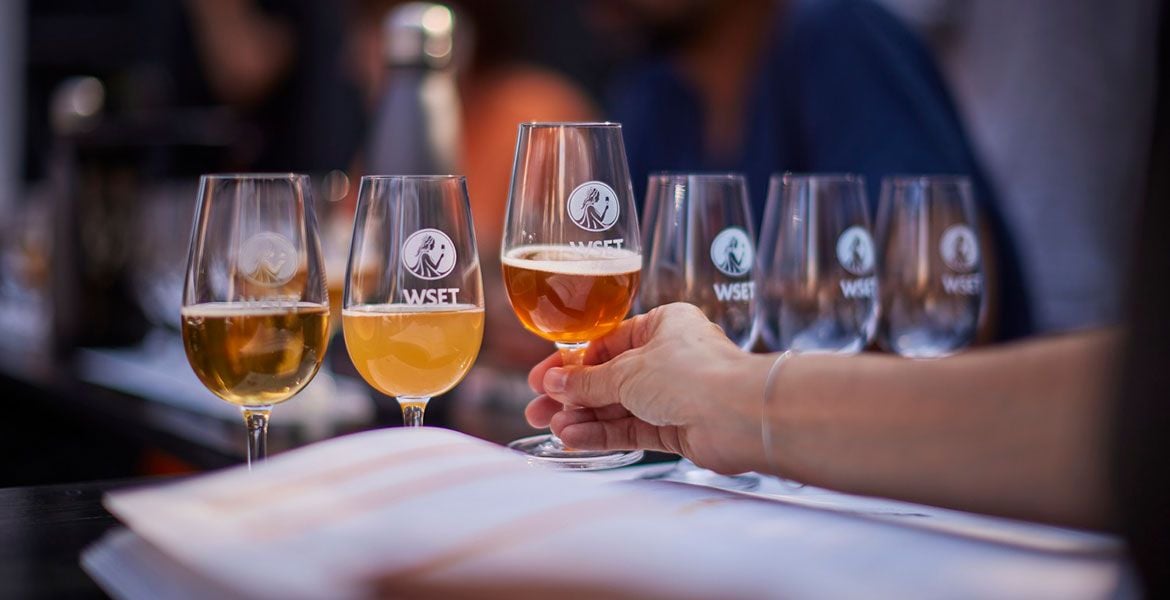In this article, we delved into the history of the Norwegian farmhouse yeast kveik. It's a recent arrival on these shores and one that's set to cause a stir thanks to its rather incredible properties: capable of fermenting at a whopping 40C or taking a mere 24 to 48 hours to finish fermenting.
Yet don't get too caught up on the term "farmhouse". As Cicerone Johnathan Hepner says: “Farmhouse is a bad name for it from a consumer standpoint. It describes perfectly what it is, but it’s a really bad name for what it actually does.
"I’ve heard people calling it ‘Super Sacc’… it’s like the Arnold Schwarzenegger of Saccharomyces.”
As we covered in part one of this series, kveik is far from new, but it hasn't been in use in Australia for long; while some online forums and homebrewers have been buzzing about it for a few years, only a handful of Australian brewers have released beers brewed with the yeast commercially at time of publication.
But it’s certainly bubbling away… so we spoke to some of the early adopters to find out why they're excited about its potential.
How did you first hear about kveik?
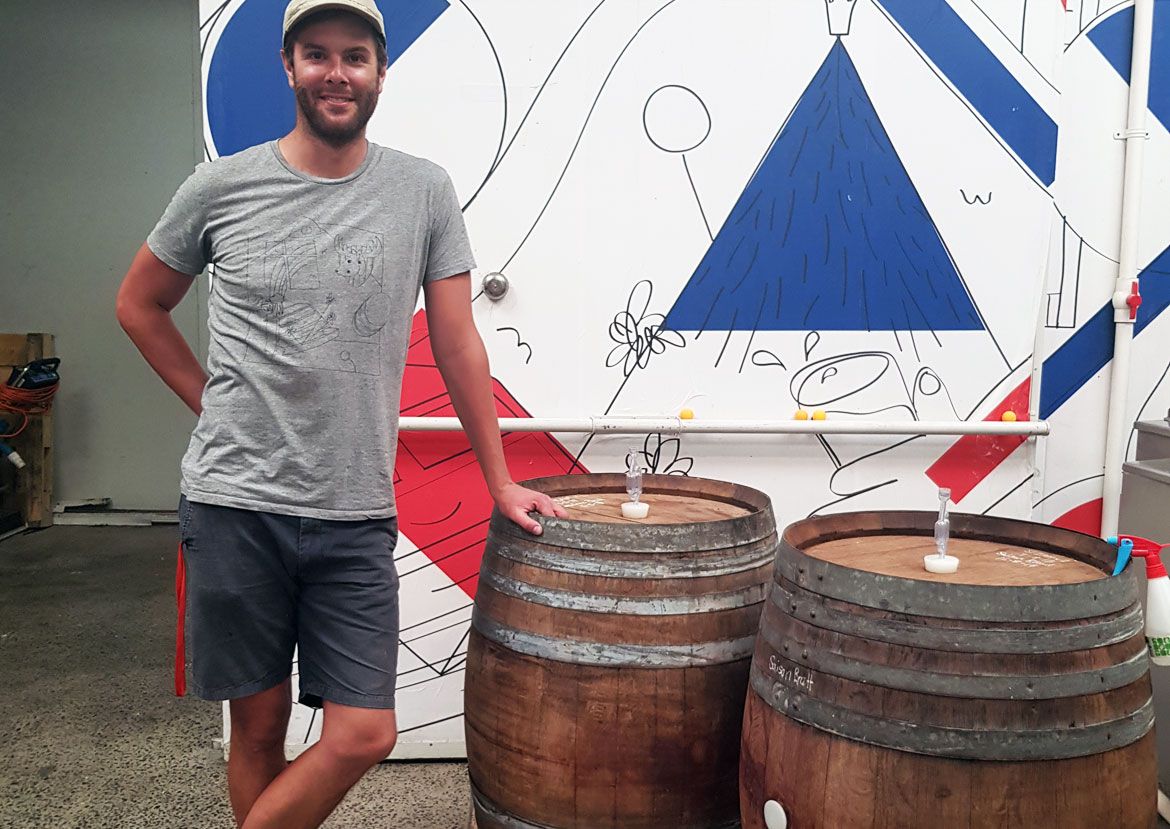
Dan Hall, brewer and co-founder of Tallboy & Moose, who released Lightning Axe last year:
I was reading the Froth Future edition and noticed one of the contributors to the edition (Ruth from Boatrocker) was extolling the virtues of Norwegian kveik yeast as an excellent yeast for homebrewers due to its incredibly high temperature tolerance. I thought if it is good enough for homebrewers then why not pro brewers!
I entered into a bit of a deep dive on kveik. My main source of information was from Larsblog. The main motivation for trying it was the novelty of a regular ale yeast that is tolerant of temperatures up 40C with no off flavours. I was also fascinated with the idea of fermentation being completed in such a short space of time with high attenuation and a unique spicy orange flavour profile. It all sounded too good to be true.
Stu Grant of Ocho, who used kveik in his Happy Place mid-strength:
Undoubtedly via the Milk The Funk (MTF) Facebook group, which I’ve been a part of for five years or so. It’s an incredible community of knowledgeable people who seem willing to share their expertise to make better beer.
I read a lot about the traditional raw ales, flavoured with juniper branches, made in rural Norway, and the whole mythological nature of these stories was intriguing! But what really got me interested in using kveik was the idea that they seemed capable of making spicy, fruity ales that would complement New World hops really well. That’s exactly what we wanted for Happy Place, so we went for it.
Johnathan Hepner, Cicerone and co-owner of Bucket Boys:
I found out about it from a guy in the States called Chris Cohen. He was visiting here for Sydney Beer Week, had just gotten back from the Norwegian Kveik Festival and had brought back some jars with him. He’d talked to all the people who have been doing it for hundreds of years. So I picked his brain about it, and then he went back to San Francisco and did a gigantic kveik event for San Francisco Beer Week. So I thought: "Fuck it, let’s do the same thing here. We’ve got this Wilds of March thing, that’d be a perfect event for it."
Drew Coleman, brewer at Watsacowie Brewing:
I’ve been obsessed with Scandinavian and Baltic brewing for a few years now. The first brewery I worked for was Robe Town Brewery whose brewer is Latvian and uses old style techniques like a wooden barrel mash tun, branches and hay as a false bottom, and a wood-fired kettle.
When I started looking into Baltic brewing yeast I found the Simonaitis yeast strain [not kveik], which is harvested by Lars' kveik harvesting community. That led me to the Scandinavian culture culture. Lars Garshol is the guy that made this all possible. His blog and yeast map explain everything. Well, better than anyone else so far.
How did you go about getting your hands on some?
DH: A yeast like this is surprisingly straightforward to get your hands on. Most good homebrew shops are stocking it so I called around a few to see if I could order a few vials or smackpacks. I was greeted by the news that everyone I contacted was completely out of stock, but I should contact the manufacturer in the USA and order directly.
To get a pure strain of kveik, there was only one supplier at the time (the Yeast Bay) and they were mega easy to order from. Just fill out your order form and pay for it before Friday, which I did, and it arrives the next Monday still cold! Bloody amazing service.
SG: I bought a homebrew sized vial of Sigmund's Voss strain and – because of the nature of kveik – had cultured a pitchable quantity in under a week. We pitched about 20 times less yeast cells than we normally would, and the beer still fermented out in about 48 hours. That’s completely insane, by the way.
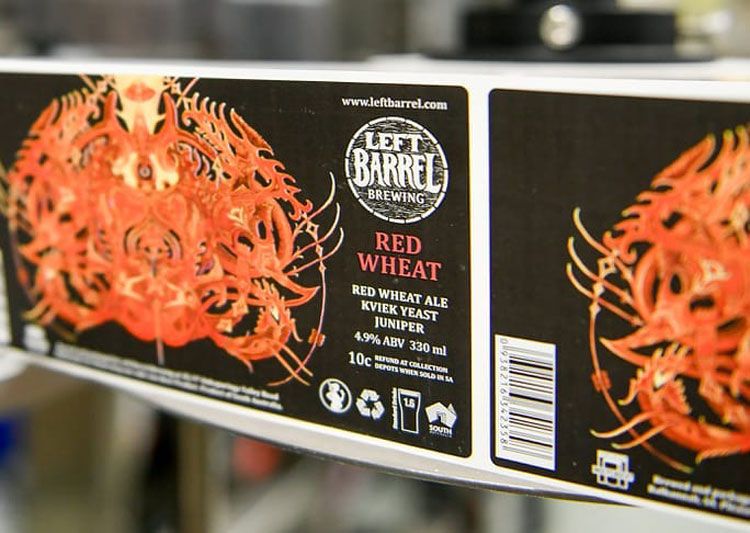
Brad Bown, owner and brewer at Left Barrel Brewing:
I’ve only used the Voss one, through the Yeast Bay in the States. It’s amazing how these strains have been kept alive, and are still so pure, so clean. We’re fortunate to get our hands on it.
JH: We bought the one that’s already in Australia; it’s called Sigmund Voss. I sourced the yeast and sent it out to everybody [who’s participating in the Kveik Festival]. We thought the easiest thing, and the smartest thing, was to get the one people could easily access in Australia. That way, when people taste it, if someone wants to go make one, or try it again, they can just grab it right away.
Shaun Blissett, head brewer at Wayward, who released Kveik to Market IPA last month:
People are talking about these wreaths [yeast rings], and I’m thinking: "How am I going to get that into Australia? I have enough trouble getting Brett[anomyces] in!"
So, from there, it was just trying to find someone who was going to send it to us. It’s so hard to bring any living organism into Australia.
We found the Hornindal strain from Omega, but they were very apprehensive to send yeast to Australia. I was trying to get a pro pitch, but they said no. So I said I’d just take the homebrew sized vial, which we do a lot for our specialty beers.
DC: I ordered a whole bunch from Omega Yeast Labs and from Norwegian homebrewers. I have seven strains so far. The Omega ones are isolated strains, but the homebrewer ones are a mix, usually with one dominant strain. And they’re not full of bacteria or Brett, either.
Sigmund Gjernes' Voss Kveik from White Labs is all people seem to be playing with in Australia so far.
What beer did you make with it?
BB: First we made Forty Six & Two IPA, then I re-pitched a portion of that next generation yeast into the Red Wheat. That was a one off for the Carwyn Cellars Canvent Calendar. I basically looked at what we had in stock: bit of base malt, 30 percent wheat, Carared for colour… throw it together and see what you get! Threw some juniper in as well – we did a tincture with the berries.
Not your traditional [farmhouse] banana and clove flavours.
SB: The beer we ended up making [Kveik to Market] was more a resinous, classic West Coast American IPA, but we chose the Hornindal strain because it spoke about the fruit, and the freshness – two things that Australian craft drinkers love. It was such a clean fruit ferment, with sweet, rounded, orange citrus. Then we applied Chinook and Columbus.
DC: I’ve brewed traditional and New World styles with them. We currently brew a sour table beer using Voss kveik and a bunch of other special ingredients.

Did it feel weird cranking the temperature right up?
DH: It was quite strange casting wort in the mid 30s, but I just followed the recommended usage given by the yeast supplier and away it went. It was a weird ferment for us, a little slower than expected and a couple of times I had to try and warm the fermenter and rouse the yeast as the temp dropped below 30C, which seemed to make the yeast unhappy.
SG: Yes! But we revelled in it! It felt completely mad, and of course we got an Instagram photo of the temp display reading 39 to 40C.
BB: Initially I was a little bit hesitant. And, actually, the first small batch we did, I didn’t get it hot enough and it stalled out. It was in the depth of winter and in our chilly little brewery, when we went to throw the dry hops in, it was only halfway through fermenting. So we ended up throwing some lager yeast into it 'cos we had no way of heating it up – pushed it into the fermenter between 30C and 40C.
DC: I’ve hit 48C with Voss. 45C is best to get the most character out of it. 48C was just a touch over but still was clean.
Under 40C is too low… well, too low to achieve decent flavour from it. People are also pitching regular yeast rates too, which is way too much.
Did it come out like you expected? Did you even know what to expect?
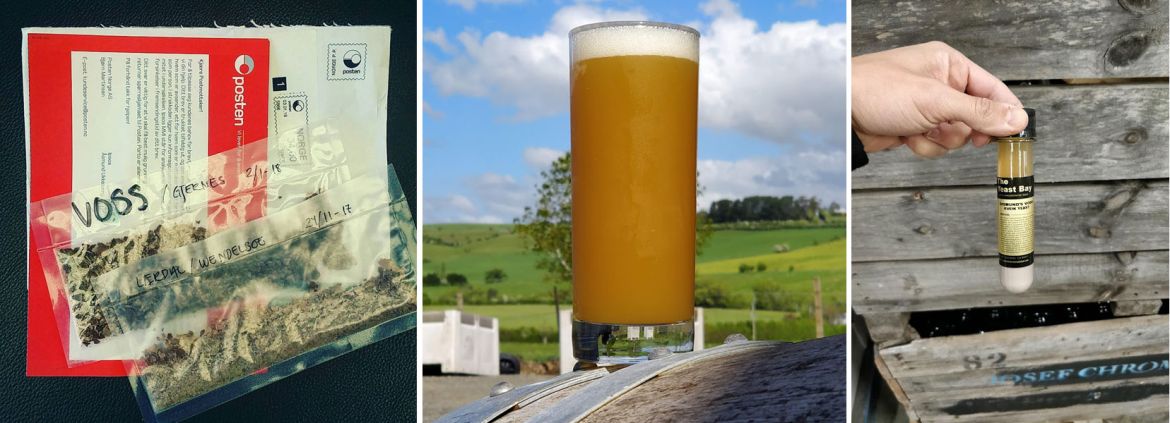
SG: Well, we didn't brew a pilot batch, so we really had no idea what to expect. Thankfully, it exceeded expectations! Not only did we get a nicely dry beer with heaps of spice and fruit (but not much farmhouse/funk), but it had a nice spritzy quality and great mouthfeel too.
For Happy Place 2.0 I managed to source some Hornindal kveik, which is supposed to be less earthy and more tropical fruity, so we decided to pair that with Citra hops instead of Centennial. Otherwise the recipe and execution were the same, and we were just as happy with it (maybe a little more so).
SB: We were pretty impressed by it! Nothing like you’ve ever seen before. The ability to be able to do what it does in high stress environments… crazy. My fear was that if I put any temperature control on it… So I set it at 30C and just let it free rise, see what happens.
It got to 45C by the end of fermentation. Pouring beer from the tank was like hot water. We had to bring the temperature down just to test it. Hot beer does not taste good.
Other than a ridiculously vigorous fermentation, it fermented clean, quick… it was mind-blowing how clean it was. Any other yeast strain and it’d be 100 percent undrinkable. Even some of our more forgiving farmhouse, Belgian yeast, which can get up to 30C, you’re starting to push it.
I’m keen to get a few more varieties.
Mike Clarke, owner of Sauce Brewing:
It was certainly quick! We started at a high temperature, and the yeast kept itself up. We stopped it getting over 38C.
What sort of responses have you received?
DH: I think it was quite a divisive beer but the general consensus was that it was unique and tasty… There was plenty of spicy orange, but with a definite banana smoothie vibe too. There was also a distinct umami flavour that complemented some of the sweetness.
I personally thought it was rad so that's why we brewed with the yeast again! This time we are finishing the beer off in oak for a more authentic flavour, as the kveiks of old would’ve had plenty of other bugs contributing to the flavour. Watch this space!
SG: Really good. It's been the one beer we've had the most positive feedback on from such a wide array of people. Being only 3.5 percent ABV is a big drawcard I think, but what the kveik seems to do is to enhance/complement the hops, and because the yeast works so hard/fast, there's plenty of character to it for such a low ABV. We certainly wouldn't have predicted it, but it's become a bit of a staple beer in our repertoire.
Do you have any plans to try different styles of beer with kveik?
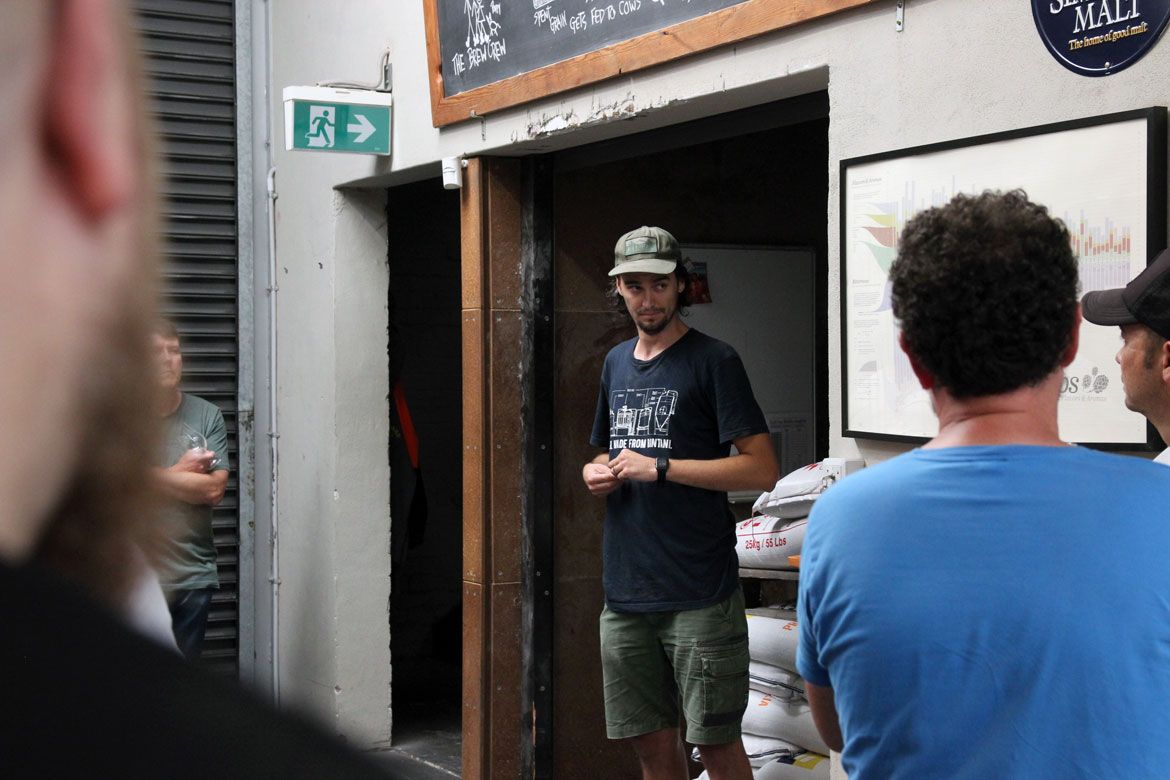
SG: We’ve certainly toyed with the idea of using kveik in different ways. The most obvious would be to brew an amped up version of Happy Place – codename Double Happy – and see just how juicy it can get with more hops and a higher original gravity... I also like the idea of incorporating kveik into a house culture, along with a mixture of other yeasts and bacteria, for creating sour beers. The unique character you get with kveik lends itself to secondary fermentation, I think.
SB: We’re gonna brew a porter with it next week. Just because I need to get a porter on tap quickly… and out of interest's sake, to see if we get any esters to interact with the dark malts.
The next beer we release with it, I’m of two minds as to whether we say we use the strain in it, or to just use it. We don’t say: "Raspberry/Everyday/India Pale Ale using American ale yeast". But while people are interested and enthusiastic about it…
DC: I'm currently trialling two upcoming kveik brewed beers that I'm super excited about for Watsacowie. I'm actually planning to travel to Europe this year, too, and research kveik and farmhouse brewing for a blog or possible book down the track.
MC: We’ve got three or four in tank at the moment – one for Carwyn, one for Brewsvegas, one for Odd Culture – [and] trying a Trubble & Squeak with one.
Do you think kveik will be a big thing in the Australian brewing scene?
BB: It’s fast becoming one of our favourite house yeasts. I think it’s fairly forgiving in terms of different styles. The options are essentially endless, from pales and IPAs through to porters and stouts. We play around with a lot of fruit beers as well, so the fruity esters go well with that. Maybe not so much with a saison, because you’re not gonna get that dryness. Or a lager, which wants a lower temperature.
It just flies in the face of all the brewing techniques we’ve all learned over the years… and that ale yeasts shouldn’t get over 22C or 23C. And the turnaround time! Because it’s fermenting so warm, the whole fermentation activity is happening quickly. Most of us don’t like to rush things, but it’s nice to be able to pump out a beer in quicker time.
JH: It’s gonna be everywhere. This is gonna be a new thing. I think we brewed our New England IPA start to finish in four days. With two dry hops. And that was with no temperature control. Just free rein. Just wanted to see what it would do.
I think the main advantage is how quick it ferments, and the fact that it floccs out super easy. Not to mention that, once you propagate it once, you can just keep re-using it. I reckon what’ll happen is it’s going to be fermented like an ale yeast, 20C, and clean. It still goes fast at that temperature. And you can pitch about half as much – for a big brewery, that’s good. It’s just gonna replace this US-05 thing.
Everyone’s gonna make a hazy IPA, or some sort of double IPA, with this yeast. Or a pale ale, even… kveik can pretty much be anything you want it to be. I’m curious to see how it all goes. I think the interesting thing will be to see how people experiment with it – to get different esters, different strains.
As long as the beer tastes good, why not make beer in half the time? Double your capacity. It’s not going to be as beneficial for a brewery that’s not at capacity, but for a brewery that’s always chasing their tail…

Adrian Pua, manager at Odd Culture in Darlinghurst:
The potential of this new yeast is probably similar to when New World hops started coming out, which are now pretty commonplace. When they first came out, these really tropical fruity hops with high alpha acids kind of changed the game. And I think this will change the game too.
I think it has a lot of potential in terms of turnover as well. Because you can make beers so quickly with it, you can experiment quickly. You could make a crap batch, fix it up, and within two weeks you’ll be making a twice refined version of it.
But I think brewers are really excited about this yeast because it doesn’t add too much unwanted or interesting flavours, it can ferment pretty clean, you can make an IPA out of it, but you could make a bunch of different stuff as well. I think it’d be cool to do a table beer with it, low alcohol, really quick beer to make, really smashable kind of style. That’s something I’d want to get it into.
It’ll be interesting to see how it interacts with other cultures too. For people that make mixed culture beers, how would that integrate with their house culture, traditional yeasts, or whatever?
SB: A lot of breweries in US are looking to use it as their house strain. When you start turning brews around in five to seven days, your brewery doesn’t have to be as big, your next step for expansion doesn’t have to be in six months. And another thing we were talking about is its potential for bottle conditioning. Instead of two weeks or a month, we could be getting beers out in 24 hours, pushing them out faster than ever before. Just mind-blowing.
Whether it’s gonna hang around… I think it’s gonna be a matter of access. If the Australian homebrew stores can start bringing in a steady supply of it. That’s what’s gonna make it doable. That’s what’s gonna increase its longevity here.
DC: The odds seem against it, as Belgian, other farmhouse and flavoursome yeasts have long taken a backseat so that New World hops can shine with US-0something-or-others. But kveik strains are a different breed, they're cleaner and there’s no conditioning needed... the possibility of a super fresh lupulin bomb that can be smashed within a week is surely appealing to the masses.
I just hope that traditional styles made with kveik find some homes in breweries in Australia one day too.
MC: There are a few different strains [so] we wanna try the same base beer with three strains – see which has more fruit, which is more neutral, and so on. See if we want to use one as a house strain.
If you can cut a three-week cycle down to one week, you can triple your capacity. There are certain styles it’s not gonna work for, but we’re testing it with a few.
The Kveik Festival
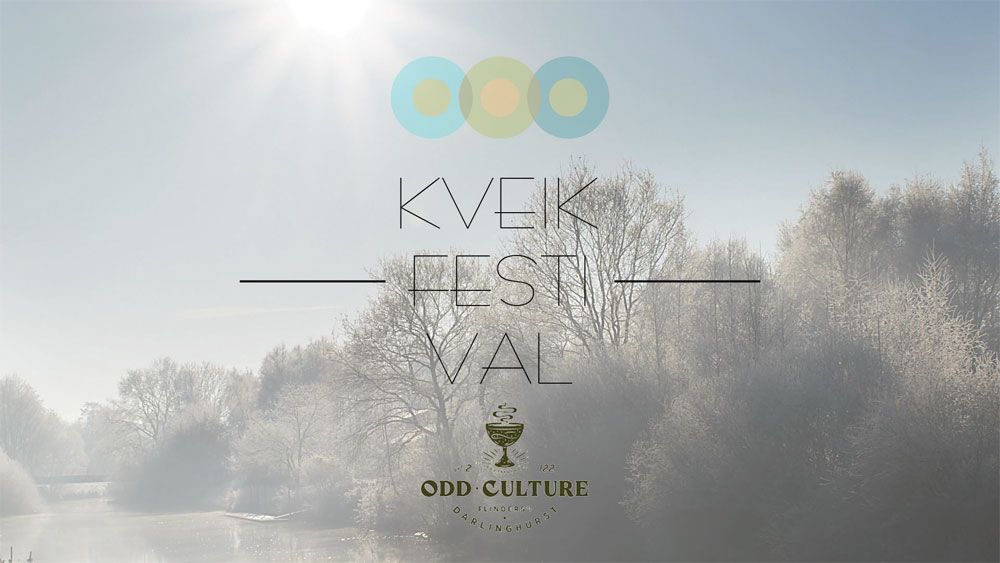
On March 8, the first Australian Kveik Festival will be taking place at Odd Culture, co-hosted by The Taphouse and Bucket Boys. It's part of the Wilds of March, a month-long celebration of wild, sour and farmhouse style beers taking place across Sydney.
Featuring nine beers brewed with kveik by nine different brewers, the event will be a showcase of the Norwegian super yeast, as well as a sharing of knowledge. A number of the brewers and hosts will be onsite for an informal Q&A about the beers and the yeast.
Johnathan says: "I told the brewers, 'We don’t need nine hazy IPAs – make something fun.' I think Jay, our brewer, made a porter. There’s a few hazy IPAs. The guys at Bounty Hunter are making a gruit. Scotty at Rocks is making something weird as well.
"Some said, 'We’ll source our own strain', but I was like, 'Why doesn’t everyone use the same strain, so we can see what everyone does with it?' So pretty much everybody’s on the Sigmund. Not even that it’s a good or bad one – it’s just good to see what happens."
Taphouse manager Tom Evans says he's unsure what to expect.
"I'm super excited to see what the brewers do with it. I know they're all great brewers, and if Wayward’s first attempt is anything to go by, we're going to have some really interesting beers on tap."
"We don’t have the specifics yet," adds Adrian. "Normally a few weeks out from the event I’d be a bit worried. But going by how quickly kveik works, I’m not too worried. It’ll be interesting to see what they come out with… there's so much possibility with this yeast."
FOR FURTHER INFORMATION ABOUT KVEIK:
- Larsblog, Lars Garshol’s blog.
- Milk The Funk, “a communal authority on alternative yeast and bacteria fermentation with an emphasis in alternative brewing techniques”. There’s a Facebook community, a wiki, and a podcast.
- A peer reviewed research paper about kveik (with Lars as one of the contributors) for the real brewing nerds.



